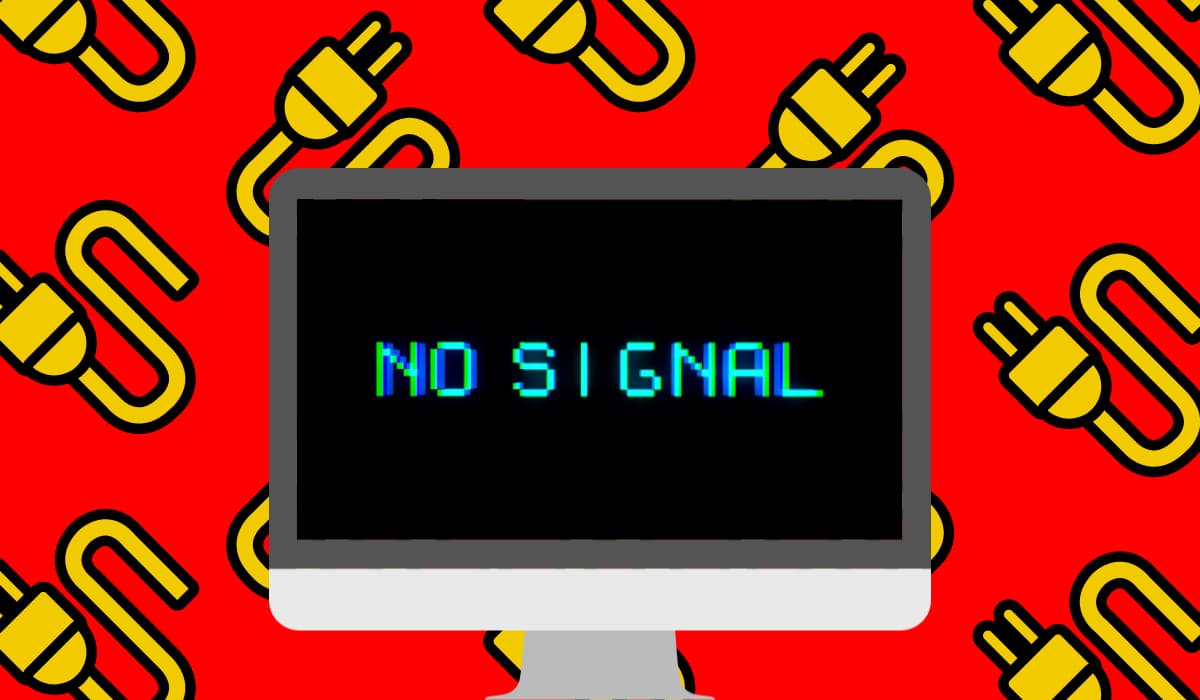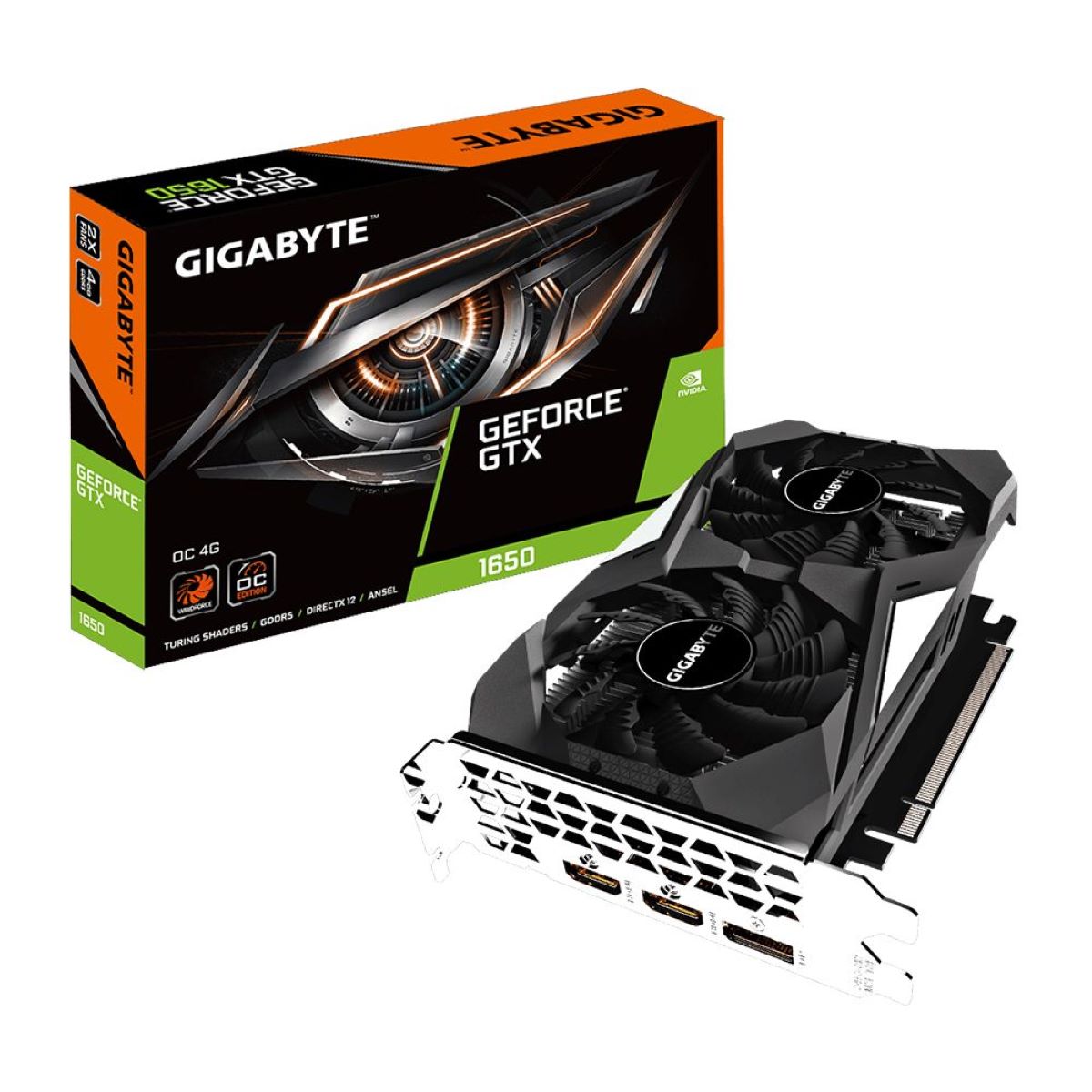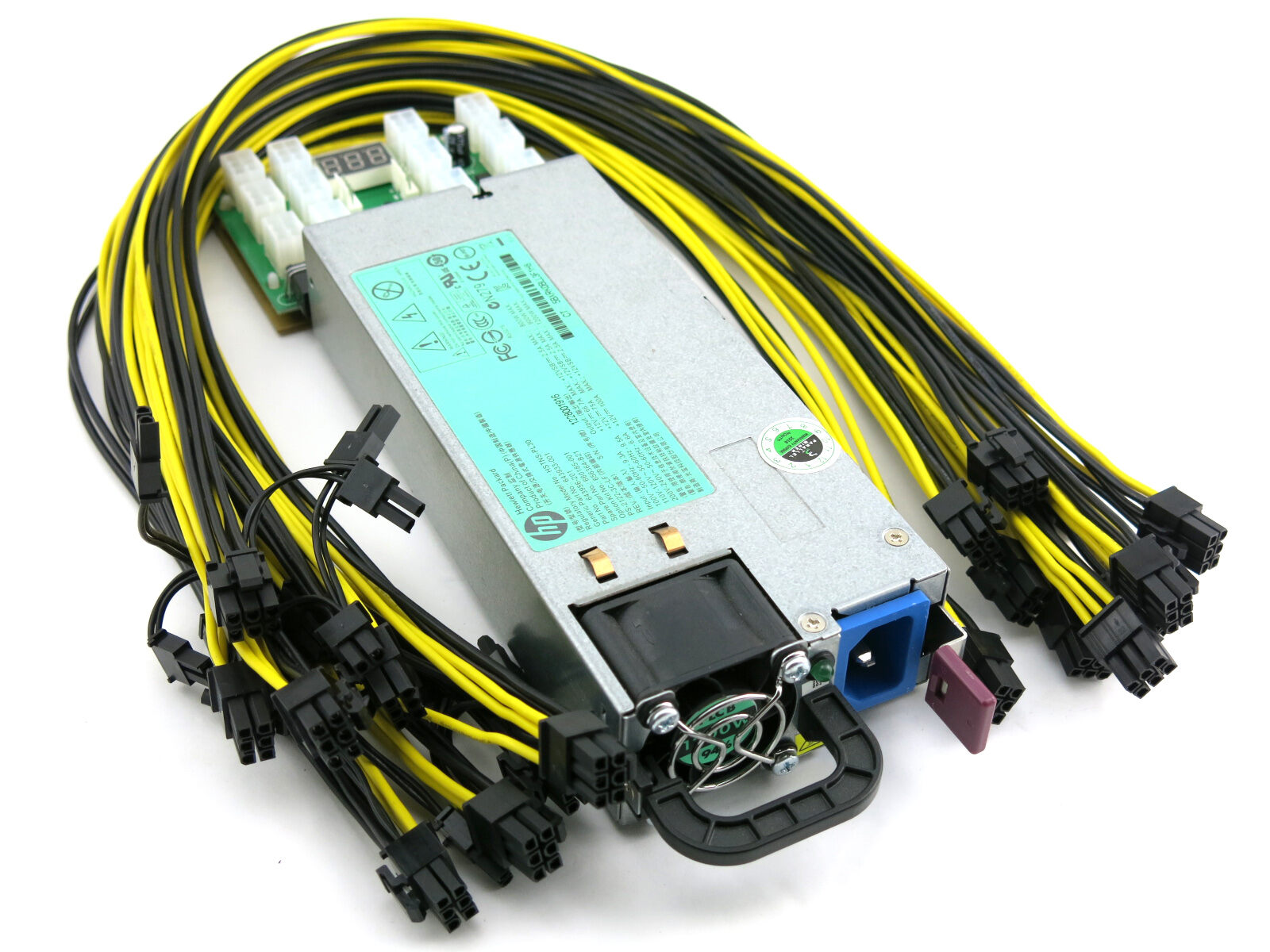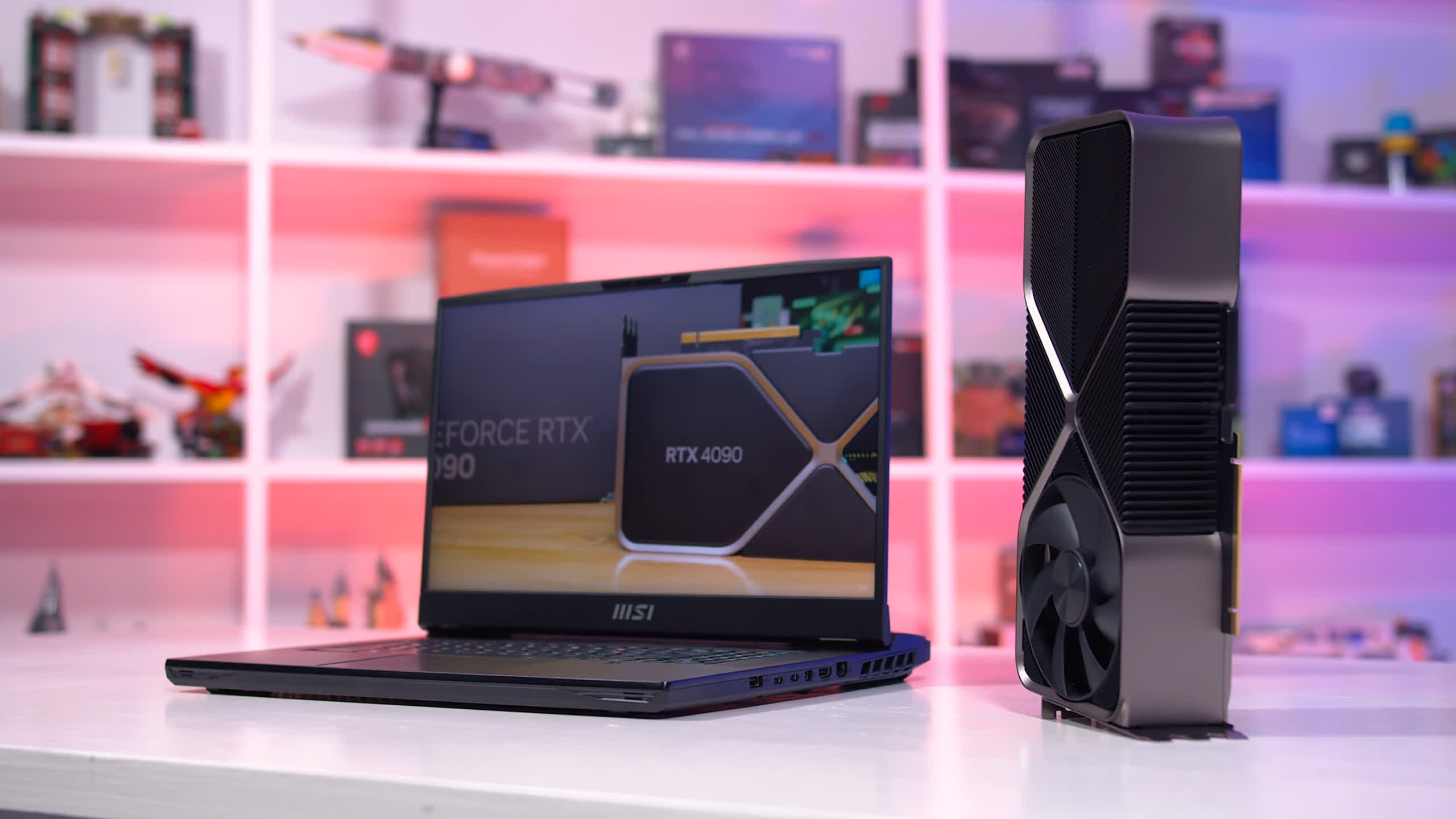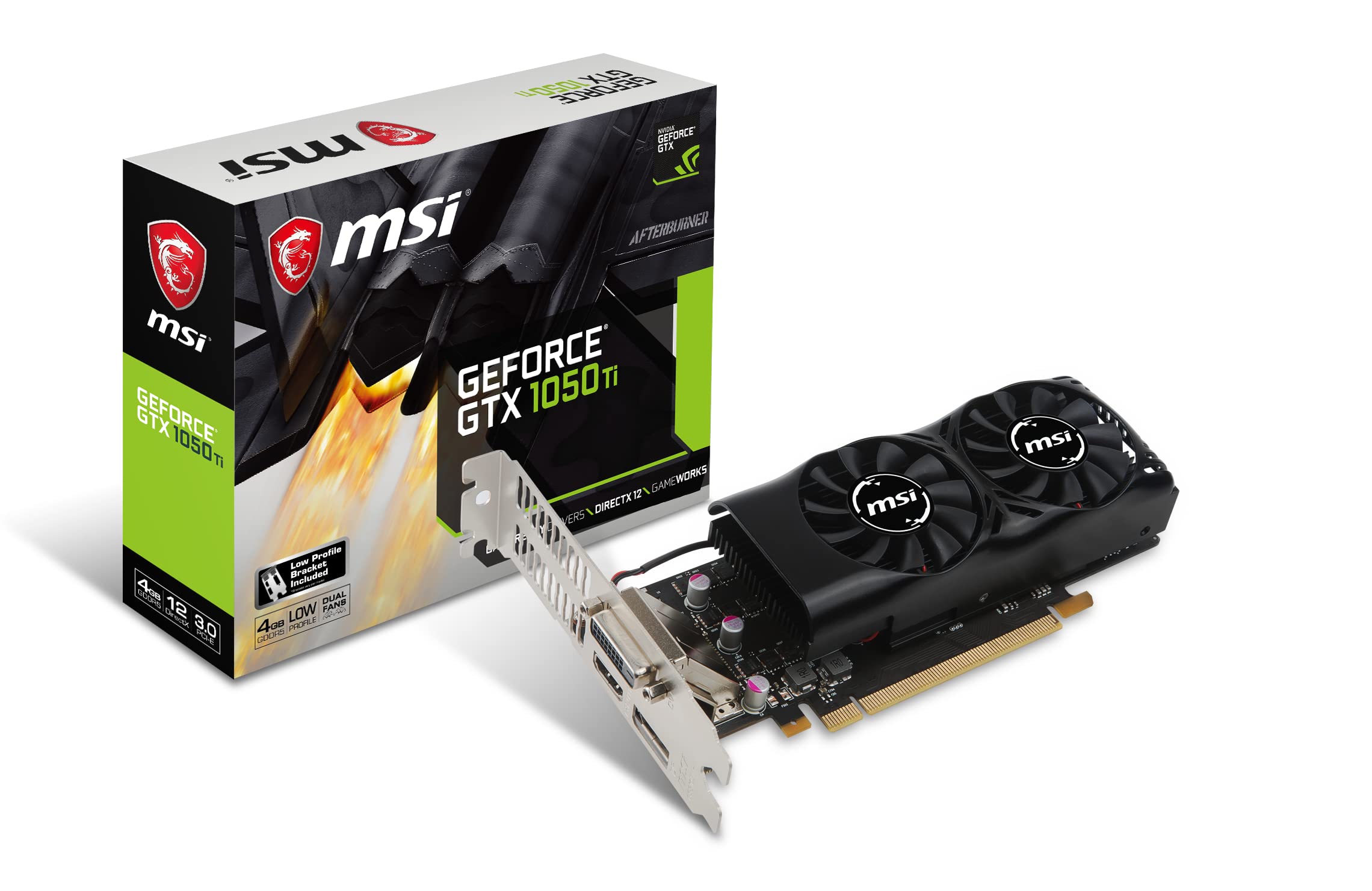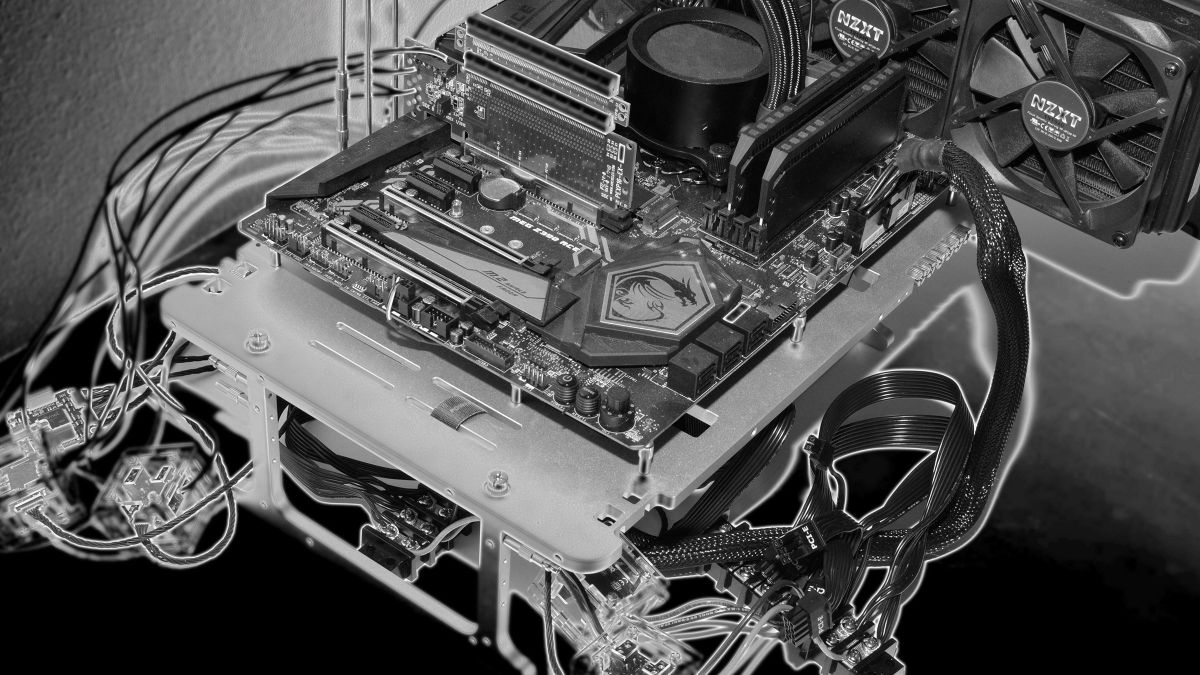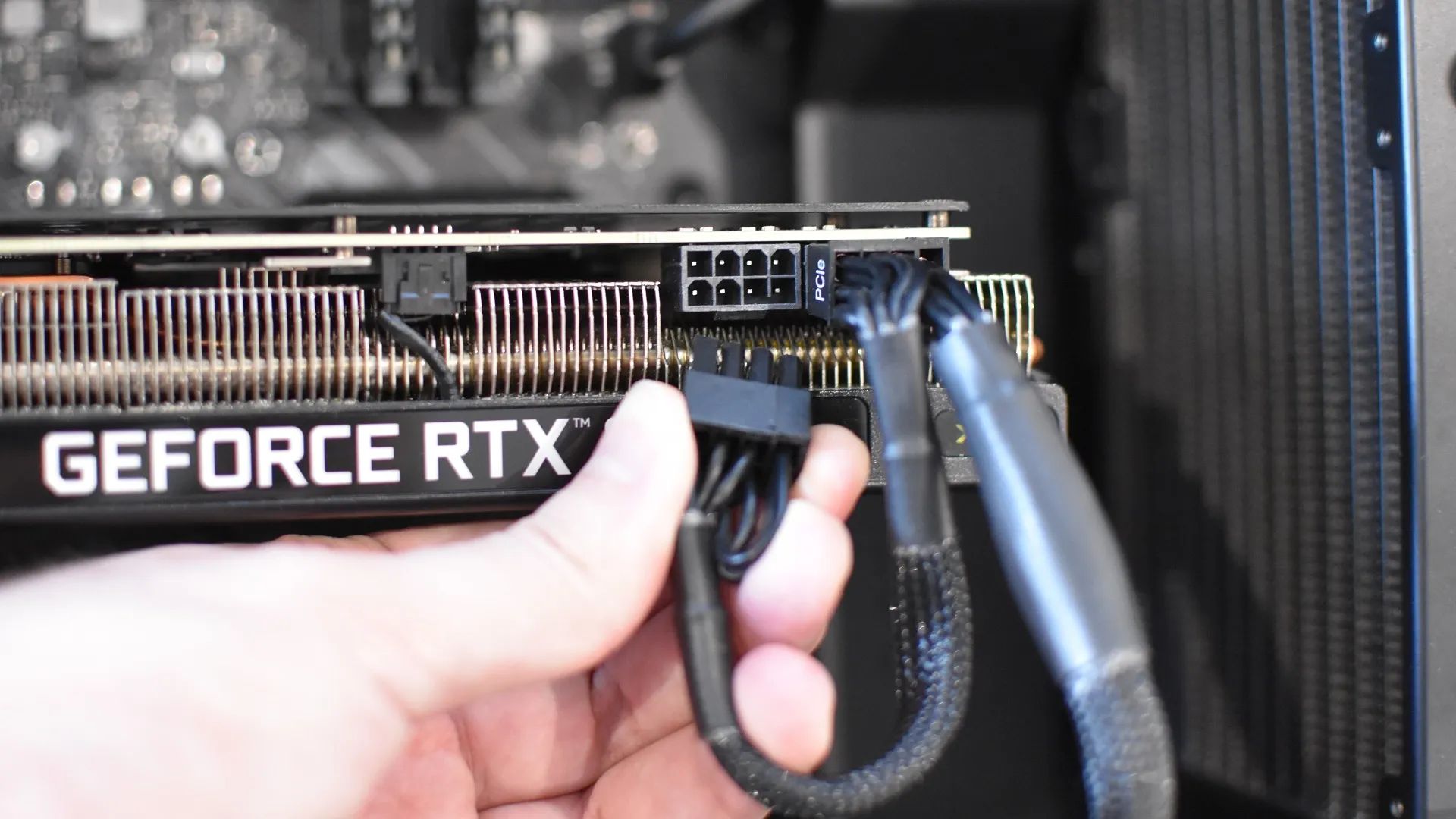Introduction
When you plug in a GPU (Graphics Processing Unit) into your computer and there is no display, it can be quite frustrating. The GPU is an essential component responsible for rendering images, videos, and other graphics-intensive tasks. If you encounter a situation where there is no display when the GPU is plugged in, there can be several reasons behind this issue.
In this article, we will explore the possible causes for the lack of display when a GPU is connected to your computer. We’ll also provide troubleshooting steps to help you resolve the problem and get your GPU working properly.
It’s important to note that the solutions mentioned in this article assume a basic knowledge of computer hardware and software. If you are uncomfortable performing any of the steps discussed or have limited technical expertise, seeking assistance from a professional technician may be advisable.
By understanding the potential causes and following the troubleshooting steps, you can effectively diagnose and resolve the issue of no display when a GPU is plugged in, ensuring that you can enjoy smooth graphics performance and a visually immersive computing experience.
Reasons for No Display When GPU Plugged In
There can be several reasons why you may experience no display when a GPU is plugged into your computer. Understanding these reasons can help you narrow down the cause and implement the appropriate solution. Here are the common factors that can contribute to this issue:
- Incorrect Connection: One of the primary reasons for no display when a GPU is plugged in is an incorrect connection. Ensure that the GPU is securely inserted into the PCIe slot on the motherboard and that all necessary power cables are connected properly. A loose or improperly connected GPU can result in no display output.
- Insufficient Power Supply: GPUs require a significant amount of power to operate efficiently. If your power supply unit (PSU) does not have enough wattage to support the GPU’s power requirements, it may lead to a lack of display. Check the specifications of your GPU and ensure that your PSU can deliver adequate power to support it.
- Faulty GPU or PCIe Slot: A faulty GPU or PCIe slot can also cause no display when a GPU is plugged in. The GPU may be defective, and the PCIe slot may not be functioning correctly. To determine if this is the case, try using the GPU in another PCIe slot if available, or test it on a different system to see if the issue persists.
- Driver Issues: Outdated or incompatible drivers can prevent the GPU from displaying correctly. If you recently installed a new GPU or updated your operating system, it’s crucial to ensure that you have the latest drivers installed. Incompatible or outdated drivers can lead to display issues, including no output from the GPU.
These are the primary reasons why you may encounter no display when a GPU is plugged into your computer. By examining these factors, you can identify the specific cause and proceed with the appropriate troubleshooting steps.
Incorrect Connection
One of the most common reasons for experiencing no display when a GPU is plugged into your computer is an incorrect connection. It’s essential to ensure that the GPU is securely and properly connected to the PCIe slot on the motherboard.
Here are a few things to check to ensure a correct connection:
- Insertion: Make sure the GPU is fully inserted into the PCIe slot. Sometimes, it may seem like the GPU is properly connected, but it might not be seated correctly. Gently push the GPU into the slot until you hear a click, indicating it is securely in place.
- Power Cables: Ensure that all necessary power cables are connected to the GPU. The power connectors, such as the 6-pin or 8-pin connectors, need to be properly attached to the GPU. Check both ends of the power cables to ensure they are securely connected to the GPU and the PSU.
- Compatibility: Verify that the GPU is compatible with your computer’s motherboard and PCIe slot. Check the documentation or the manufacturer’s website to confirm compatibility. Some older motherboards may not support newer GPUs due to differences in slot types or power requirements.
If you have confirmed that the GPU is correctly connected but still experience no display, try disconnecting and reconnecting the GPU to ensure a proper connection. Sometimes, simply reseating the GPU can resolve any connection issues that may be causing the problem.
In certain cases, using a different PCIe slot on the motherboard can also help diagnose whether the issue lies with the specific slot. If you have multiple PCIe slots available, try connecting the GPU to another slot and see if the display works.
Remember to power off your computer and unplug it from the wall before making any connections or adjustments to avoid any potential damage to the components.
By ensuring a correct and secure connection between the GPU and the motherboard, you can eliminate one of the common causes of no display and proceed with further troubleshooting steps if needed.
Insufficient Power Supply
Another common reason for encountering no display when a GPU is plugged into your computer is an insufficient power supply. GPUs, especially high-performance ones, require a significant amount of power to function properly. If your power supply unit (PSU) doesn’t provide adequate power, it can lead to display issues.
Here are a few things to consider when evaluating whether your PSU is supplying enough power:
- Wattage: Check the wattage rating of your PSU. Refer to the specifications of your GPU and ensure that the PSU can deliver sufficient power to support it. High-end GPUs typically require more power, so ensure that your PSU can handle the load.
- Cables and Connectors: Verify that all necessary power cables from the PSU are connected to the GPU. Some GPUs require additional power connectors, such as 6-pin or 8-pin cables. Ensure that these connectors are securely attached to both the GPU and the PSU.
- Multiple GPUs: If you have multiple GPUs or other power-hungry components, the power supply requirements increase further. Make sure your PSU has enough wattage and the necessary connectors to support all the components in your system.
- Upgrading the PSU: If your existing PSU is insufficient to power your GPU adequately, consider upgrading to a higher-wattage PSU. Ensure that the new PSU is compatible with your system and offers the necessary power connectors for your GPU.
If you suspect that the power supply is the cause of the no display issue, there are a few steps you can take to troubleshoot:
- Disconnect Non-Essential Components: Temporarily disconnect any non-essential components from your system, such as extra hard drives or optical drives. This reduces the power load on the PSU and allows more power to be allocated to the GPU.
- Test with a Different PSU: If possible, borrow or purchase a higher-wattage PSU to test with your system. Connect it to your GPU and see if the display issue is resolved. If the display works properly with the new PSU, it confirms that the original PSU was insufficient.
Remember to handle the PSU and perform any changes with caution, as improper installation or connection can damage your components. If you’re unsure or uncomfortable working with the power supply, consider seeking assistance from a professional technician.
By addressing any power supply insufficiencies and ensuring that your GPU receives the necessary power, you can eliminate this potential cause of no display and continue troubleshooting if needed.
Faulty GPU or PCIe Slot
A faulty GPU or PCIe slot can also be responsible for the lack of display when a GPU is plugged into your computer. These components may experience issues that prevent proper communication or rendering of the display.
Here are a few scenarios where a faulty GPU or PCIe slot can cause no display:
- Faulty GPU: If your GPU is defective or damaged, it may not be able to produce the necessary display output. This can happen due to various reasons, including manufacturing defects, physical damage, or overheating. Testing the GPU on another system can help determine whether it is the cause of the no display issue.
- Defective PCIe Slot: A faulty PCIe slot on the motherboard can also prevent the GPU from functioning correctly. The slot may be defective due to physical damage, electrical issues, or wear and tear over time. Testing the GPU on a different PCIe slot can help determine if the problem lies with the specific slot.
If you suspect a faulty GPU or PCIe slot, here are a few steps to help diagnose the issue:
- Test the GPU on another system: If possible, try installing the GPU on another computer to see if it works properly. If the display functions well on the second system, it indicates that the GPU is not the issue.
- Try a different PCIe slot: If you have multiple PCIe slots on your motherboard, try installing the GPU in a different slot. This helps determine whether the problem lies with the specific slot. If the display works in the alternate slot, it suggests that the original slot has a fault.
- Replace or repair the GPU or motherboard: If testing reveals that the GPU or PCIe slot is faulty, you may need to replace or repair the component. If the GPU is under warranty, contact the manufacturer for repair or replacement options. If the PCIe slot is deemed faulty, it may require professional assistance to repair or replace the motherboard.
It’s essential to approach the diagnosis and repair of a faulty GPU or PCIe slot with caution. If you are uncertain or uncomfortable performing these steps, it’s advisable to seek assistance from a qualified technician.
By identifying and addressing any faults in the GPU or PCIe slot, you can successfully resolve the no display issue and restore the functionality of your graphics card.
Driver Issues
Outdated or incompatible drivers can often lead to display problems when a GPU is plugged into your computer. Drivers act as a bridge between the GPU and the operating system, allowing them to communicate effectively. If the drivers are outdated or incompatible, it can result in no display or other related issues.
Here are a few common driver issues that can cause a lack of display:
- Outdated Drivers: If you recently installed a new GPU or updated your operating system, it’s important to ensure that you have the latest drivers installed. Outdated drivers may not be compatible with your GPU or the current version of the operating system, resulting in no display or other display-related problems.
- Incompatible Drivers: Sometimes, the installed drivers may not be compatible with the GPU or the operating system, causing conflicts and display issues. Upgrading or downgrading the drivers to a version specifically designed for your GPU can help resolve compatibility-related problems.
- Failed Driver Installation: In some cases, the driver installation process can fail, leading to missing or corrupted driver files. This can result in the GPU not functioning correctly and no display output. Reinstalling the drivers correctly can help resolve this issue.
To address driver issues, follow these troubleshooting steps:
- Update GPU Drivers: Visit the GPU manufacturer’s website and download the latest drivers for your specific model. Uninstall the existing GPU drivers from your system and install the updated drivers. This ensures that you have the most recent version of the drivers, which are often optimized for stability and compatibility.
- Remove and Reinstall GPU Drivers: If the GPU drivers are already up to date, but you are still facing issues, uninstall the drivers completely and perform a clean installation. This process involves removing all traces of the previous driver installation before installing the latest versions. This ensures a fresh installation and can help resolve any driver-related conflicts.
- Update BIOS: In some cases, outdated BIOS firmware can cause compatibility issues with the GPU and result in no display. Visit the motherboard manufacturer’s website and check for BIOS updates. If an update is available, follow the instructions provided to update your BIOS to the latest version.
Always ensure that you download drivers from official sources and follow the installation instructions provided by the GPU manufacturer. It is also recommended to create a system restore point before making any changes to the GPU drivers or the BIOS.
By addressing any driver-related issues and ensuring that you have the latest compatible GPU drivers installed, you can resolve the no display problem associated with driver conflicts.
Troubleshooting Steps
When facing a no display issue when a GPU is plugged into your computer, it’s essential to follow a systematic approach to troubleshoot and identify the underlying cause. Here are some suggested troubleshooting steps you can take:
- Check Connection and Cables: Verify that the GPU is securely inserted into the PCIe slot on the motherboard. Ensure that all necessary power cables are connected properly to the GPU and the power supply unit (PSU).
- Verify Power Supply Compatibility and Adequacy: Make sure your PSU is compatible with the GPU and provides sufficient wattage to power it. Check the power connectors and ensure they are correctly connected.
- Test GPU on Another PCIe Slot: If your motherboard has multiple PCIe slots, try installing the GPU in a different slot to determine if the original slot is faulty.
- Update Drivers and BIOS: Update the GPU drivers to the latest version provided by the manufacturer. Uninstall the existing drivers before performing a clean installation. Additionally, check for BIOS updates and update the firmware if available.
If none of these steps resolve the issue, here are a few additional troubleshooting suggestions:
- Test GPU on Another System: If possible, try installing the GPU on a different computer to see if it works properly. This helps determine whether the GPU itself is faulty.
- Reset BIOS Settings: Resetting the BIOS to default settings can sometimes resolve compatibility issues. Consult your motherboard manual or manufacturer’s website for instructions on how to reset the BIOS.
- Seek Professional Assistance: If all else fails or if you are uncomfortable performing these troubleshooting steps, it may be best to seek assistance from a professional technician or contact the GPU manufacturer’s support for further guidance.
Remember to take precautions during troubleshooting, such as turning off the computer and disconnecting it from the power source before making any hardware adjustments. It’s also a good idea to create a system restore point or backup your important files before attempting any modifications to the system.
By following these troubleshooting steps, you can efficiently diagnose and resolve the no display issue, ultimately restoring the functionality of your GPU and enjoying a seamless computing experience.
Check Connection and Cables
One of the initial troubleshooting steps when encountering a no display issue after plugging in a GPU is to check the connection and cables. An incorrect or loose connection may prevent the GPU from functioning properly and outputting a display signal.
Here are a few key points to consider when examining the connection and cables:
- Proper Insertion: Ensure that the GPU is firmly and properly inserted into the PCIe slot on the motherboard. Sometimes, the GPU may seem connected, but it may not be seated correctly. Apply gentle pressure to firmly push the GPU into the slot until it clicks into place.
- Power Cables: Check the power cables connected to the GPU. Many GPUs require additional power from the PSU through dedicated power connectors, such as 6-pin or 8-pin connectors. Verify that these power cables are securely attached to both the GPU and the PSU.
- Cable Compatibility: Confirm that the cables being used are compatible with the GPU and PSU. Different GPU models and PSUs may require specific cable types, so refer to the respective manuals or manufacturer’s website to ensure compatibility.
If you suspect an issue with the connection or cables, consider the following troubleshooting possibilities:
- Reconnect the GPU: Disconnect the GPU from the PCIe slot and then reconnect it. This can help ensure a proper and secure connection. Pay attention to any signs of physical damage on the GPU or PCIe slot as well.
- Check Power Supply Capacity: Verify that your PSU has sufficient capacity to support the GPU’s power requirements. Consult the GPU’s specifications and the PSU’s wattage rating to ensure compatibility. Upgrading to a higher-wattage PSU may be necessary if the current PSU is inadequate.
- Replace or Test Cables: If you suspect a faulty cable, try using a different cable to connect the GPU to the PSU. This helps determine if the original cable is the source of the problem. If possible, test the GPU with another set of cables as well.
Always remember to turn off your computer and unplug it from the power outlet before performing any checks or modifications to ensure safety.
By thoroughly checking the connection and cables, you can eliminate any potential issues caused by improper or loose connections, and increase the chances of resolving the no display problem associated with the GPU.
Verify Power Supply Compatibility and Adequacy
When encountering a no display issue after plugging in a GPU, it is crucial to verify the compatibility and adequacy of your power supply. GPUs require a significant amount of power to operate smoothly, and if the power supply unit (PSU) is not compatible or cannot provide sufficient power, it can lead to display problems.
Consider the following points when assessing the compatibility and adequacy of your power supply:
- PSU Compatibility: Ensure that your power supply is compatible with the specific GPU you have installed. Check the GPU’s power requirements and compare them with the PSU’s specifications. It is important to have the necessary power connectors and ensure they are compatible with the GPU.
- Power Requirements: Determine the power requirements of your GPU model. Typically, higher-end GPUs demand more power. Verify whether your power supply can deliver the required wattage to support the GPU’s operation. Insufficient power can cause the GPU to malfunction or fail to display any output.
- Power Connectors: Make sure that all required power connectors are properly connected from the power supply to the GPU. Some GPUs require additional power through dedicated connectors, such as 6-pin or 8-pin connectors. Verify that these connectors are securely plugged into both the GPU and the power supply.
If you suspect power supply issues, consider the following troubleshooting steps:
- Power Supply Wattage: If your power supply does not have sufficient wattage to meet the GPU’s power requirements, you may need to upgrade to a higher-wattage PSU. Refer to the GPU’s specifications to determine the necessary power supply capacity.
- Power Cable Connections: Double-check the power cable connections for accuracy and secureness. Ensure that the cables are firmly connected to both the GPU and the power supply unit. Loose connections can result in insufficient power delivery.
- Test with a Different Power Supply: If possible, test the GPU with a different power supply to see if the no display issue persists. By using another power supply known to be compatible and adequate, you can determine if the problem lies with the original power supply unit.
Always remember to turn off your computer and unplug it from the power outlet before making any modifications or adjustments to the power supply to avoid any potential damage.
By ensuring the compatibility and adequacy of your power supply, you can eliminate any potential power-related issues that may be causing the no display problem on your GPU.
Test GPU on Another PCIe Slot
If you are experiencing a no display issue after plugging in a GPU, testing it on another PCIe slot can help determine if the problem lies with the specific slot or if it is a broader GPU-related issue. A faulty PCIe slot can prevent proper communication between the GPU and the motherboard, leading to the lack of a display.
Follow these steps to test the GPU on another PCIe slot:
- Available PCIe Slots: Determine if your motherboard has multiple PCIe slots. The number of slots can vary depending on the model and form factor. Check your motherboard’s documentation or consult the manufacturer’s website for this information.
- Selecting a Different Slot: Choose a different available PCIe slot on the motherboard to insert the GPU. It is ideal to select a slot that supports the same PCIe generation as the GPU (e.g., PCIe 3.0 or PCIe 4.0) for optimal compatibility.
- Power Off: Make sure your computer is powered off and unplugged from the electrical outlet for safety purposes. This protects both you and the components from any potential electrical damage.
- Disconnect the GPU: Carefully remove the GPU from its current PCIe slot. Gently release any locking mechanisms, detach the power connectors, and slide the GPU out of the slot.
- Insert the GPU: Insert the GPU into the selected different PCIe slot. Align the gold contacts on the bottom of the GPU with the PCIe slot and gently press it down until it is fully seated. Ensure that it clicks into place and any locking mechanisms engage.
- Reconnect Power Cables: Securely connect all necessary power cables from the power supply unit (PSU) to the GPU. Double-check that the power connectors are correctly oriented and fully inserted into both the GPU and the PSU.
- Power On and Test: Plug your computer back into the power outlet and power it on. Verify if the GPU successfully displays output on the monitor connected to the newly used PCIe slot.
If the GPU works correctly on the different PCIe slot and displays a proper output, it indicates that the original slot may be faulty. However, if the no display issue persists, there may be a different underlying cause, such as a defective GPU or an issue unrelated to the PCIe slot.
Remember, handling computer components should be done with care and caution. If you are unsure or uncomfortable performing these steps, consider seeking assistance from a professional technician.
By testing the GPU on another PCIe slot, you can effectively determine whether the lack of display is caused by a faulty PCIe slot or if there is a different issue with the GPU or the system.
Update Drivers and BIOS
Outdated or incompatible drivers can often be the cause of a no display issue when a GPU is plugged into your computer. In addition to drivers, outdated or incompatible BIOS firmware can also contribute to display problems. Updating the GPU drivers and BIOS can help resolve compatibility issues and ensure proper communication between the GPU and the operating system.
Follow these steps to update the drivers and BIOS:
- GPU Drivers: Visit the website of the GPU manufacturer, such as NVIDIA or AMD, and navigate to the driver download section. Locate the appropriate driver for your GPU model and download the latest version compatible with your operating system.
- Uninstall Current Drivers: Before installing the updated drivers, it is recommended to uninstall the existing GPU drivers to avoid conflicts. You can do this by going to the Control Panel or the Device Manager, locating the GPU under the Display Adapters category, right-clicking on it, and selecting “Uninstall”. Follow the prompts to remove the drivers completely.
- Install Updated GPU Drivers: Once the existing drivers are uninstalled, proceed to install the updated GPU drivers that you downloaded earlier. Follow the installation wizard’s instructions and restart your computer if prompted.
- BIOS Update: Check the motherboard manufacturer’s website for any available BIOS updates. Download the latest version of the BIOS that is compatible with your motherboard model. It is important to carefully follow the instructions provided by the manufacturer to update the BIOS, as the process can vary depending on the motherboard.
- Flash BIOS: After downloading the BIOS update, follow the manufacturer’s instructions to flash the BIOS with the new version. This typically involves running a dedicated BIOS update utility provided by the manufacturer. Ensure that you follow all the precautions and guidelines to avoid any potential issues during the flashing process.
It is important to note that updating the BIOS carries some risks, and it should be approached with caution. If you are uncertain about updating the BIOS yourself, seek guidance from the motherboard manufacturer or consult a professional technician.
After updating the drivers and BIOS, restart your computer and check if the no display issue is resolved. If the problem persists, there may be other underlying causes that require further troubleshooting.
By keeping your GPU drivers and BIOS up to date, you can ensure proper compatibility and communication between the GPU and the operating system, thereby potentially resolving the no display issue.
Conclusion
Encountering a no display issue when a GPU is plugged into your computer can be frustrating, but with a systematic approach to troubleshooting, you can often resolve the problem and get your GPU functioning properly. In this article, we explored several common reasons behind the lack of display and provided troubleshooting steps to help resolve the issue.
We discussed the importance of checking the connection and cables to ensure a secure and proper connection between the GPU and the motherboard. Additionally, we highlighted the significance of verifying power supply compatibility and adequacy, as inadequate power can lead to display issues.
We also investigated the possibility of faulty GPU or PCIe slots causing the no display problem, and provided steps to test the GPU on another PCIe slot to identify potential faults. Furthermore, we mentioned how outdated or incompatible drivers can prevent proper communication with the GPU, and outlined the process of updating GPU drivers and BIOS to address compatibility issues.
By following the troubleshooting steps outlined in this article, users can systematically diagnose and resolve the no display issue when a GPU is plugged in. It’s important to approach these troubleshooting steps with caution, especially when handling computer components and making adjustments to the system.
If the issue persists after performing the troubleshooting steps, it may be best to seek assistance from a professional technician or contact the GPU manufacturer’s support for further guidance.
Remember, resolving a no display issue involves a process of elimination to identify the specific cause. By carefully examining the connection, power supply, GPU, and drivers, users can effectively diagnose and resolve the problem, leading to a seamlessly functioning GPU and an immersive computing experience.







